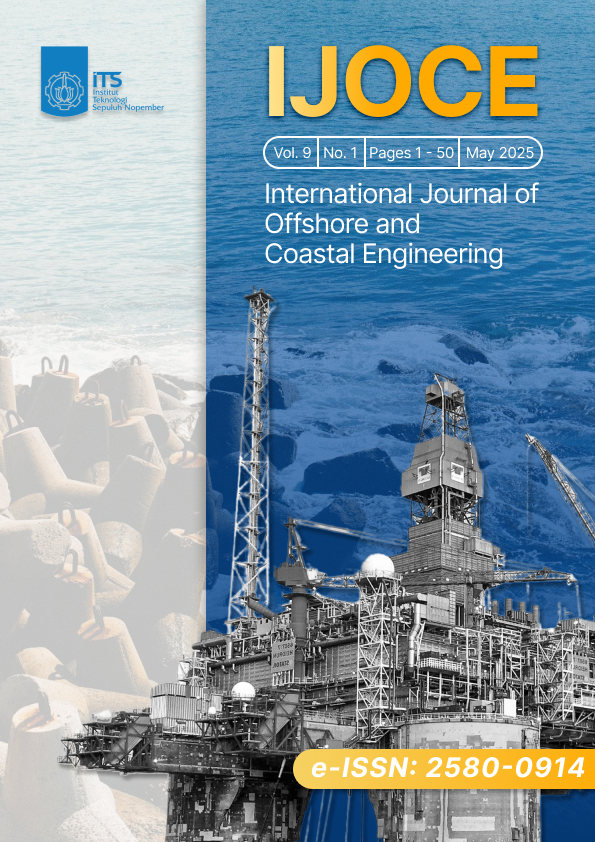Analysis of the Pretension Angle of Mooring Lines SPM and Its Effect on the Tension and Strength of Subsea Marine Hose
Keywords:
Offset, Mooring Line Tension, Pretension Angle, SPM, Subsea HoseAbstract
The industry of oil and gas industry have developed along with
advances in technology, so does the mooring system. Mooring
system is a series that functions to keep the ship station or floating
platform at all water depths. Currently, there are many types of
moorings that can be used, one of which is Single Point Mooring
(SPM). SPM itself consists of various types of mooring legs, as well
as other supporting components such as subsea hose or riser.
Subsea hose and mooring lines are closely related because in the
application, the length of the mooring lines also determines the
offset or limitation of motion of the SPM, while the subsea hose
also has a maximum limit of pull caused by the movement of the
SPM. In addition to the length of the mooring lines, another factor
is the pretension angle. Therefore, in this study, an analysis was
carried out by varying the pretension angle (45°, 50°, 55°, 60°)
under extreme conditions and inline loading by reviewing the
tensile forces on the mooring lines and risers. The larger the angle,
the smaller the tensile force, so the offset would be larger, and vice
versa. The results of this study indicate that the pretension angle
applied must be appropriate so that the tensile force on the
mooring lines that occurs can also be appropriate.
Downloads
Published
How to Cite
Issue
Section
License
Copyright (c) 2025 International Journal of Offshore and Coastal Engineering (IJOCE)

This work is licensed under a Creative Commons Attribution 4.0 International License.






